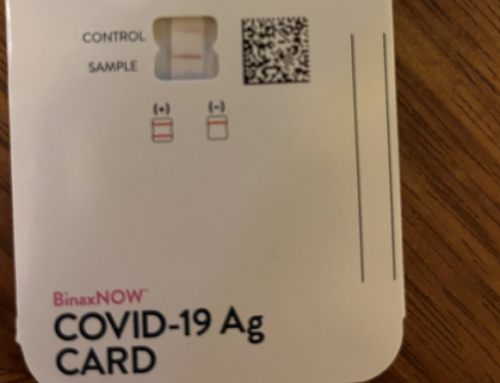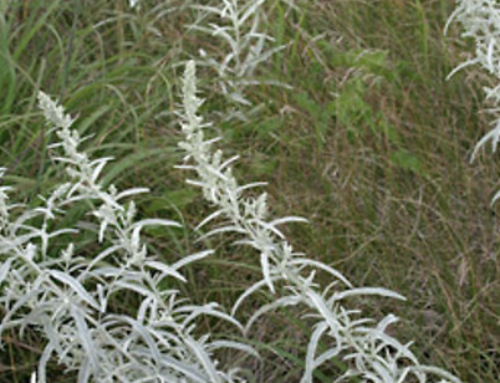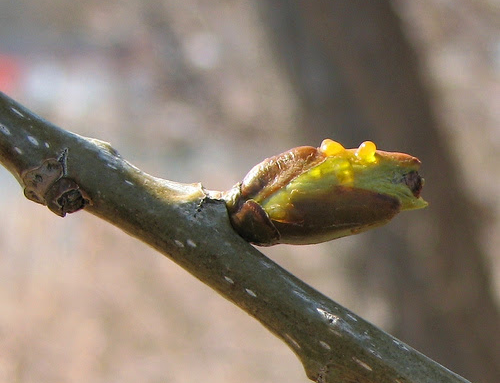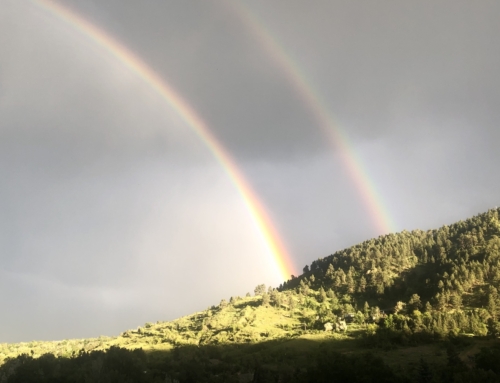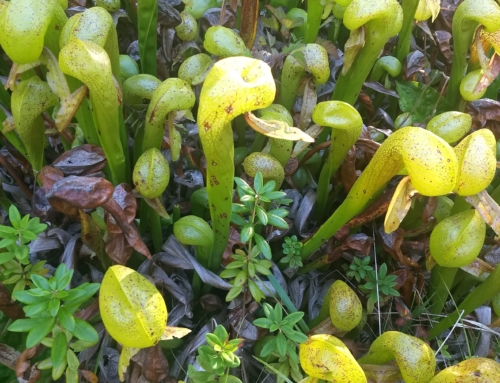By Adrian Mintzmyer
Have you ever wanted to learn how to positively identify, sustainably harvest, process, and utilize local medicinal plants from our beautiful Rocky Mountain bioregion? This article is a guide get you started on your journey!
Must-Have Books:
I’ve listed these books in the order I think is most helpful and relevant to the budding botanist.
Braiding Sweetgrass: Indigenous Wisdom, Scientific Knowledge, and the Teaching of Plants
If you do nothing else with this article, please do get inspired to read this incredible book by Robin Wall Kimmerer, botany professor and member of the Citizen Potawatomi Nation. Kimmerer’s work ingeniously weaves together equal parts botany research, indigenous understanding of plants, and Kimmerer’s personal life experience, and it will leave you with tears in your eyes. The book is set up as a series of short essays, and each essay offers us a new insight into how we as humans could be in meaningful and collaborative relationship with the ecosystems upon which we depend. Over the course of the book, the reader will start to realize how these bits of wisdom build on each other to a powerful conclusion. Kimmerer offers a solid philosophical framework to develop your own way of harvesting medicine from the wild. You can also get the audiobook, which is narrated beautifully by the author herself, and makes those long drives out to the mountains so much more enjoyable.
Medicinal Plants of the Mountain West, 2003 Edition, by Michael Moore
This book is one of the most directly applicable, hands-on books for the would-be Rocky Mountain Herbalist. The first 18 pages include a detailed explanation of harvesting techniques and easy-to-follow medicine making instructions for every herbal preparation the book mentions. The next 264 pages are detailed monographs on common medicinal plants of our area. These monographs include identification, botanical drawings, distribution maps, medicinal uses, and how to prepare medicinal-strength extractions: basically everything an herbalist needs to get started making medicine in the Rockies! One of the things I love about this book is that Michael Moore has decades of clinical experience to draw from, and can be very detailed and specific about medicinal uses – nothing abstract or theoretical here. He also has one of the dryest senses of humor I’ve ever seen in writing. Highly recommended!
Botanical Keys: Flora of Colorado by Jennifer Ackerfield and Colorado Flora, by William Webber.
A botanical key is essential for positive identification of a potential medicinal plant. It takes practice to develop the vocabulary and skill to utilize a book like this, but once you have it you can positively identify literally any plant naturally occuring in our state. The Akerfield is a bigger/pricier book, but worthwhile in its detailed species descriptions, colored photographs, illustrated glossary, and distribution maps for each species. Webber’s book cuts out species descriptions and any visual aids, and he has separate books for plants growing to the eastern/western slopes of the continental divide, making the key a more compact to carry for fieldwork. If you’re struggling with the professional terminology prevalent in these books, I’d recommend also getting Plant Identification Terminology: An Illustrated Glossary, which is very helpful for visualizing and really understanding your rapidly expanding botanical vocabulary.
Botany In a Day: The Patterns Method of Plant Identification, by Thomas J. Elpel
Did you know that about 75% of the approximately 3322 plant species in Colorado fall into about 20-30 major plant families? Instead of focusing endless hours on memorizing each individual plant, it is practical and satisfying to learn to recognize larger family patterns. Once you’ve become familiar with a few plant family patterns, many plants will start to look familiar, even if you’ve never noticed them before. In some cases, you can even make guesses about the edible, medicinal, or poisonous properties of a plant based on the family, and keying them out from family is much faster than starting at the beginning.
Rocky Mountain Flora, by James Ells
If you get discouraged with keys, this picture book covers all of the most common flowering plants in our region. Of the field guides I’ve seen, this one has the most accurate photos, and is easiest to use as its arranged primarily by flower color, and secondarily by plant family.
Rocky Mountain Tree Finder: A pocket manual for identifying Rocky Mountain trees, by Tom and Bridget Watts.
This tiny book starts out with a great, simple introduction to Rocky Mountain ecosystems. Being able to identify these ecosystems is the basis for being able to locate the medicinal plants you’re looking for. Trees are a tell-tale sign of different ecosystems, as different trees require different growing conditions (temperature, moisture, and elevation), and are easily the largest and most visible plants around. The key to trees included in this book is incredibly simple compared with the more technical botanical keys mentioned above.
Free Online Resources
The Northeast School Of Botanical Medicine, run by herbalist 7Song in Ithaca, NY has a great list of free resources here: http://7song.com/resources/
I especially recommend checking out
- Botanical Identification Steps
- Plant Phylogeny Chart
- Botany for the Herbalist: Plant Families
- Wildcrafting for the Practicing Herbalist
- And free video tutorials here: http://7song.com/resources/videos/
The USDA Plant Database: USDA Plants Database
This extensive government database of North American plants will give you national distribution maps for any species, images, and information about the classification and legal status (such as “endangered”, “rare”, or “invasive”) for any species.
The American Herbalists Guild: https://www.americanherbalistsguild.com/
You don’t need to become a member of this organization to access free webinars (if you sign up for their newsletter) and an archive of past free webinars.
Online Herbal Supply Companies:
- Pacific Botanicals
- Mountain Rose Herbs– In addition to being reputable suppliers, Mountain Rose has a blog with recipes and medicine making instructions.
Southwest School Of Botanical Medicine: http://www.swsbm.com/
This is the website of the late herbalist Michael Moore, (yes, the same one who wrote Medicinal Plants of the Mountain West!) He has left behind an extensive set of resources for future herbalists. Some of my favorites are his clinical manuals, especially “Herb Formulas for Clinic and Home”, which are all tried and true herbal formulas from his decades of clinical experience.
Basic Botany Kit
Some tools that are helpful for the botanist/herbalist include:
- A botany lens for seeing the detailed parts of a plant that a key may ask about.
- A razor blade, teasing needle, and a pair of tweezers or hemostats for in-field dissection.
- Pruners, hori hori (or other small trowel, short knife, and paper bags for harvesting/drying.
- Jars, alcohol, labels, pens for in-field tincture making.
Lastly
I hope this list helps you dive into a deep and healing relationship with the Rocky Mountain bioregion. If you want to be part of a botany/herbalism learning community, check out our Field Botany Certificate Program here. Happy harvesting!

